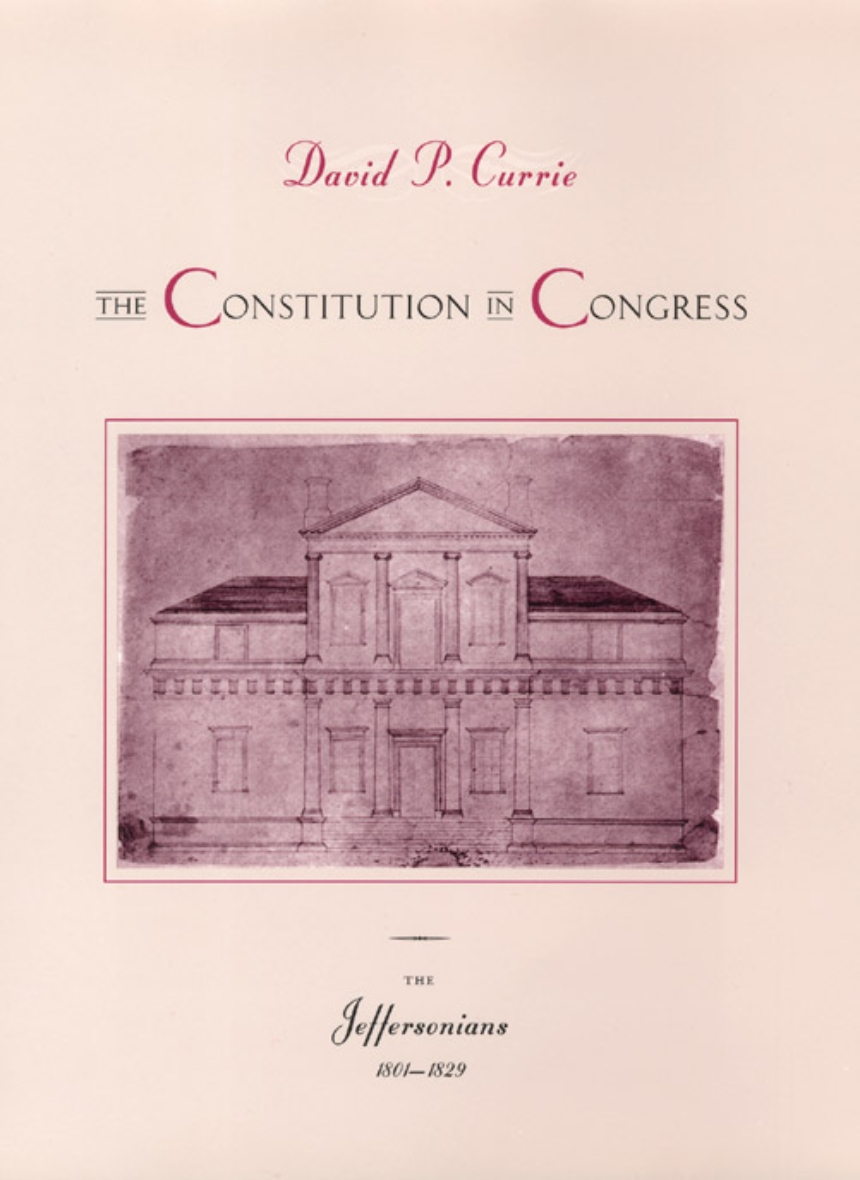The Constitution in Congress: The Jeffersonians, 1801-1829
Because of the judicial branch’s tremendous success in reviewing
legislative and executive action in the United States, legal scholars
have traditionally looked only to the courts for guidance in
interpreting the Constitution. This, the second book in David P.
Currie’s multivolume series, looks to the legislative and executive
branches for insights into the development of constitutional
interpretation.
Currie examines the period of Republican hegemony from the
inauguration of Thomas Jefferson in 1801 to the election of Andrew
Jackson in 1829. During this time of great leadership and
controversy, many benchmark issues—the abolition of the new Circuit
Courts, the Louisiana Purchase, the Burr conspiracy, the War of 1812,
the Monroe Doctrine, and the Missouri Compromise, among others—were
debated and decided almost exclusively in the legislative and
executive arenas. With its uniquely legal perspective and
comprehensive coverage, The Constitution in Congress
illustrates how the executive and legislative branches matched the
Supreme Court in putting flesh and blood onto the skeleton of the
Constitution.
legislative and executive action in the United States, legal scholars
have traditionally looked only to the courts for guidance in
interpreting the Constitution. This, the second book in David P.
Currie’s multivolume series, looks to the legislative and executive
branches for insights into the development of constitutional
interpretation.
Currie examines the period of Republican hegemony from the
inauguration of Thomas Jefferson in 1801 to the election of Andrew
Jackson in 1829. During this time of great leadership and
controversy, many benchmark issues—the abolition of the new Circuit
Courts, the Louisiana Purchase, the Burr conspiracy, the War of 1812,
the Monroe Doctrine, and the Missouri Compromise, among others—were
debated and decided almost exclusively in the legislative and
executive arenas. With its uniquely legal perspective and
comprehensive coverage, The Constitution in Congress
illustrates how the executive and legislative branches matched the
Supreme Court in putting flesh and blood onto the skeleton of the
Constitution.
400 pages | 6-5/8 x 9-3/8 | © 2001
History: American History
Law and Legal Studies: Legal History, The Constitution and the Courts
Table of Contents
Preface
Abbreviations and Shortened Titles
Part One: President Jefferson, 1801-1809
1. The Most Endangered Branch
2. The Twelfth Amendment
3. Housekeeping
4. Expansion
5. Enemies at Home and Abroad
Part Two: Madison, Monroe, and John Quincy Adams, 1809-1829
6. War
7. Rumors of War
8. States
9. The American System
10. More about Congressional Powers
11. Ultimate Questions
Conclusion
Appendix: The Constitution of the United States
Index
Abbreviations and Shortened Titles
Part One: President Jefferson, 1801-1809
1. The Most Endangered Branch
2. The Twelfth Amendment
3. Housekeeping
4. Expansion
5. Enemies at Home and Abroad
Part Two: Madison, Monroe, and John Quincy Adams, 1809-1829
6. War
7. Rumors of War
8. States
9. The American System
10. More about Congressional Powers
11. Ultimate Questions
Conclusion
Appendix: The Constitution of the United States
Index
